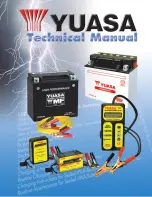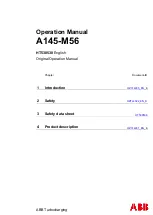
GUARANTEE
WARRANTY DOES NOT COVER
Product model
Serial number
Username
Date of sale
Company
Client's signature
The warranty period starts from the date of sale of the products and covers 1 year for all power products.
During the warranty period, free failures caused due to the use of poor-quality materials in the production and
manufacturer workmanship admitted fault are removed. The guarantee comes into force only when warranty card
and cutting coupons are properly filled. The product is accepted for repair in its pure form and full completeness.
• Mechanical damage (cracks, chips, etc.) and damage
caused by exposure to aggressive media, foreign objects
inside the unit and air vents, as well as for damage
occurred as a result of improper storage (corrosion of metal
parts);
• Failures caused by overloading or product misuse, use of
the product for other purposes. A sure sign of overload
products is melting or discoloration of parts due to the high
temperature, simultaneous failure of two or more nodes,
teaser on the surfaces of the cylinder and the piston or
destruction of piston rings. Also, the warranty does not
cover failure of the automatic voltage regulator due to
incorrect operation;
• Failure caused by clogging of the fuel and cooling systems;
• Wearing parts (carbon brushes, belts, rubber seals, oil
seals, shock absorbers, springs, clutches, spark plugs,
mufflers, nozzles, pulleys, guide rollers, cables, recoil starter,
chucks, collets, removable batteries, filters and safety
elements, grease, removable devices, equipment, knives,
drills, etc.);
• Electrical cables with mechanical and thermal damage;
• Product opened or repaired by a non-authorized service center.
• Prevention, care products (cleaning, washing, lubrication,
etc.), installation and configuration of the product;
• Natural wear products (production share);
• Failures caused by using the product for the needs related
to business activities;
• If the warranty card is empty or missing seal (stamp) of the Seller;
• The absence of the holder's signature on the warranty card.
WARRANTY CARD
The product is in good conditions and fully complete. Read and agree the terms of the warranty.
Product
Model
Company
Date
of sale
Product
Model
Company
Date
of sale
Product
Model
Company
Date
of sale
In order to ensure correct and safe usage of your battery charger, you should read these instructions
carefully. Please store these instructions for future reference.
1. SAFETY
Ensure that cables are regularly inspected and kept in good condition. Never use the battery char-
ger if the mains lead or plug is damaged.
Never use the battery charger if the output leads or crocodile clips are damaged. Never use the
battery charger if it has been dropped or damaged in any way.
WARNING:
Battery charging produces explosive gases. Prevent flames and sparks. Provide
adequate ventilation during charging.
For indoor use only, do not expose to rain or any other forms liquid or moisture.
The charger must not be used as a DC power source or for any purposes other than those listed.
The charger must not be used for the charging of non-rechargeable batteries.
Replacement of the mains cable should only be carried out by the manufacturer, its service agent or
a suitably qualified electrician / electrical technician in order to avoid a hazard. There are no
user-serviceable parts in this product.
GENERAL SAFETY
This battery charger can be used by children aged from 8 years and above, and persons with redu-
ced physical, sensory or mental capabilities or lack of experience and knowledge if they have been
given supervision or instruction concerning use of the appliance in a safe way, and understand the
hazards involved.
Children must not play with this battery charger.
Cleaning and user maintenance shall not be carried out by children without supervision.
GASES
The charging process produces flammable and explosive gases - the area in which charging takes
place should be kept well ventilated. Only connect and disconnect the battery leads when the mains
supply is disconnected. Avoid flames or sparks! Do not smoke!
GENERAL INFORMATION
1. Retain these instructions for future use.
2. Store this product in a dry place to avoid moisture damage.
3. There are no user-serviceable parts in this product. Opening the case is dangerous and should
therefore only be carried out by qualified persons. Resultant damage to the product will result in the
loss of your guarantee.
4. Do not use this product if it is damaged in any way.
5. Only use this product for the purposes described in this instruction booklet. Damage resulting
from incorrect usage will not be covered by your warranty.
SAFETY
The use of safety goggles and gloves when working with lead acid batteries is strongly advised.
9.
TROUBLESHOOTING
Display Fault
Action
Battery
polarity
Battery
clamps Disconnect
&
reversal
symbol
reversed
reconnect
correctly
displayed.
Clamp indication and
Dirty or oxidized
Clean terminals
voltage symbols
battery terminals.
displayed
Low
or
unstable
charging
current
No
Display
Mains
supply
not
Check
socket
connected
Display back light on,
Battery not
Check clamps,
display
showing
0.0V
connected
replace
battery
and clamp symbol.
Output lead fuses should be checked and replaced as necessary (5A blade) in connection with all faults.
Persistent fuse replacement may indicate a fault with the charger or leads. Check these before each use
and do not use if worn or damaged.
Avoid contact with the electrolyte as this is acidic and is likely to cause burns to the skin or clothes.
If this occurs you should rinse the affected area with plenty of water immediately. In the event of
burns to the skin, medical advice should be sought if the symptoms persist.
DISPOSAL
In the event that this product must be disposed of, an authorised place for the recycling of electrical
and electronic appliances must be sought. Contact your local authority for information concerning
local Household Recycling Centres with applicable facilities.
This product must not be disposed of with general domestic waste.
RECOMMENDED USES
This product is suitable for charging 6V and 12V lead acid, sealed lead-acid, GEL, maintenance-free
and AGM batteries of capacities up to 120Ah (Ampere hours). Check with your device manufacturer
if you are unsure about the suitability of this charger for use with your device.
BATTERY CHARGING INSTRUCTIONS
Please read your vehicle manufacturer’s instructions for further information and advice regarding
the disconnection of the battery for charging purposes.
IMPORTANT:
This model will only recover 12 volt batteries with a minimum residual voltage of 8
volts, or 6 volt batteries with a minimum residual voltage of 4 volts. If the residual voltage is lower
than above figures, the charger will not operate.
Batteries store large amounts of energy. Avoid short circuits which could result in a dangerous
electrical discharge that could result in personal injury and / or damage to equipment and property.
The charger will automatically detect the voltage (6V or 12V) and diagnose the condition of your
battery. This will initiate a recovery charge followed by a 3 step charging program, or go straight to
the 3 step program (as listed in part 4).
2. PREPARATION OF THE BATTERY
In the case of sealed lead-acid batteries, firstly remove the caps from each cell and check the level
of liquid. If it is below the recommended level, top up with ionized or distilled water.
UNDER NO CIRCUMSTANCES SHOULD TAP WATER BE USED
To avoid battery acid splashing, the cell caps should be replaced but not tightened until charging is
complete. This allows any gases formed during charging to escape. It is inevitable that some minor
escape of acid will occur during charging. If your battery is permanently sealed it is unnecessary to
carry out these checks.
3. CHARGING LEAD SELECTION
Interchangeable ring terminal and fully-insulated battery clip charging leads are supplied. Select the
appropriate lead for your application and attach to the charger output lead using the quick fit con-
nectors fitted to each, before connecting the charger to either the mains supply or battery.
4. CONNECTION
To avoid sparks which could cause an explosion, the mains supply should always be disconnected
before making or breaking battery connections. Connect the battery clips or ring terminals to the
battery in the following order:
1) Connect the positive charging lead (RED) to the positive post of the battery ( / +ve or P).
2) For vehicles with the battery still installed: Connect the negative charging lead (BLACK) to the
vehicle chassis (marked - / -ve or N), well away from the battery, fuel line, and hot or moving parts.
For batteries removed from the vehicle: Connect the negative charging lead (BLACK) to the negative
post of the battery (marked - / -ve or N).
After connecting the clips, rotate them slightly so as to remove any dirt or oxidization, thus ensuring
a good contact.
5. CHARGING
WARNING!
DO NOT ATTEMPT TO START THE VEHICLE WITH THE CHARGER CONNECTED.
THIS MAY DAMAGE YOUR BATTERY CHARGER.
1) Switch on the mains power supply. For 12V batteries select the charging mode appropriate for
your battery. Providing the battery is in an acceptable condition the charge cycle will now commen-
ce and the LCD display will now show charging information.
2) When the battery is fully charged with 5 bars shown on the display, the charger will switch to
provide a maintenance charge and may be left connected to the battery.
The 3 step charging program is:
1) Bulk charge - charging with constant current
2) Charging with constant voltage;
3) Maintenance charge. When the battery is fully charged the charger will maintain the condition of
your battery automatically.
6. WHEN CHARGING IS COMPLETE
Switch off the mains supply, unplug the charger and disconnect the clips from the battery, negative
(BLACK lead) first. NOTE – the ring terminal charging lead can be permanently attached to a vehicle
battery. When not in use the charger should NOT be left connected to this lead. The lead end-cap
must be fitted to prevent short circuit or dirt / water entry.
For non-sealed lead-acid batteries: Inspect the liquid levels in each cell and top up if necessary,
using the correct fluid. Now push home or tighten the caps. Any surplus fluid around the cell tops
should be wiped off (this should be done with extreme care as it is acidic). If the battery has been
removed for charging, replace it and re-connect the cables.
FAULTY CELLS – NON-SEALED LEAD-ACID BATTERIES
Batteries are usually made with six cells. One of these cells can deteriorate or get damaged. If after
several hours charging your battery is still flat, you should test the battery. Take hydrometer
readings from each cell in the battery. If one reading is lower than the others, this could indicate a
faulty cell. The battery will require replacement if one or more cells are faulty.
LCD Display Key :
1. 12V Slow charge: 12V/0.8A
2. 12V Fast charge: 12V/3.8A
3. Winter mode only for 12V battery as 12V fast charging 4. 6V Slow charge: 6V/0.8A
5. Battery level indicator. Each bar represents 20% outline border flashing indicates charging in
progress outline border & all five bars indicates a full battery & maintenance charging is activated
6. Battery voltage indicator
7. Reverse polarity connection indicator
8. Faulty battery indicator
9. Clamp indicator
10. Charging current indicator. Only shows for 3 seconds at the start of the charging process
kept fully charged, it can cause problems and a possible breakdown.
7. TECHNICAL SPECIFICATIONS
Protection class: IP65
Input voltage: 220-240V 50~60Hz
Input current: 0.6 A
Output:
Fast
:
12 V / 3.8 A
Slow
:
12 V / 0.8 A
6V: 0.8A
Max Lead-acid battery capacity: Max120Ah
8. SUMMARY OF OPERATION




























